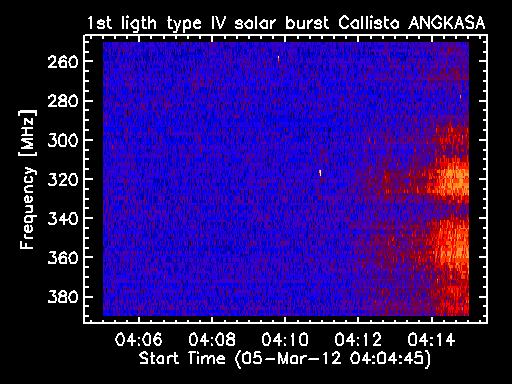The Beginning Impulsive of Solar Burst Type IV Radio Emission Detection Associated with M Type Solar Flare
CALLISTO, Astronomy Astrophysics
DOI:
https://doi.org/10.14331/ijfps.2012.330031Keywords:
Solar burst type IV, Solar flare, Sunspot, CALLISTOAbstract
First light detection of solar burst type IV in Malaysia in the region of 260 MHz till 380 MHz has been successfully detected on 5th March 2012. This significant solar burst variations is associated with solar flare type M level 2.0 occurred from 0412UT. Due to the effect, strong bursts that caused by extraordinary solar flares due to magnetic reconnection effect potentially induced in the near-Earth magneto tail. One possible reason behind the formation of this very complex long duration of this loop is the magnetic reconnection and disruption of the loops which is observed during flare maximum. Sunspot 1429 active region was a site of several intense in several days. In Malaysia, monitoring solar burst in radio region is just in beginning by involved the project under International Space Weather Initiative (ISWI) since 2011. We also analyzed multi wavelength observation from different sites as continuity of the phenomenon. Observations presented in this paper confirmed that Malaysia can be one of the potential countries to focus on solar monitoring solar radio emission at low- broadband frequency (45-870) MHz using ground-based telescope due to 12 hours per day throughout a year.
Downloads

Downloads
Published
How to Cite
Issue
Section
License
Copyright (c) 2020 International Journal of Fundamental Physical Science

This work is licensed under a Creative Commons Attribution 4.0 International License.










